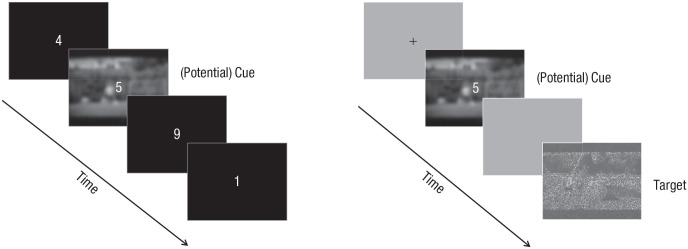Fig. 2.
Schematic for the vigilance-intrusion tasks (intrusive memory) and the modified recognition task (voluntary memory). Example trials of the vigilance-intrusion tasks are shown on the left. Participants performed a simple go/no-go task (respond only when the digit “3” appears). A background picture was presented every three trials, mostly depicting landscapes. Additional picture cues were presented infrequently, which were either stills from the trauma films or foil (unseen) films. For the foil-cue version, participants also undertook the task in a different experimental room. An example trial of the modified recognition task is shown on the right. Each trial began with a fixation cross, followed by picture cue (trauma-film cue or foil cue). Then a blank screen appeared, followed by the recognition target. Potential cues were the same in all tasks. In the example, the cue still depicts the moment before the accident when the boy is standing in a football court; the target still depicts the moment when the father cries while seeing the dead body of his son killed by a car (both cue and target belong to the same film sequence). Stills are for illustration and not up to scale; stills in the experiment were in color.

